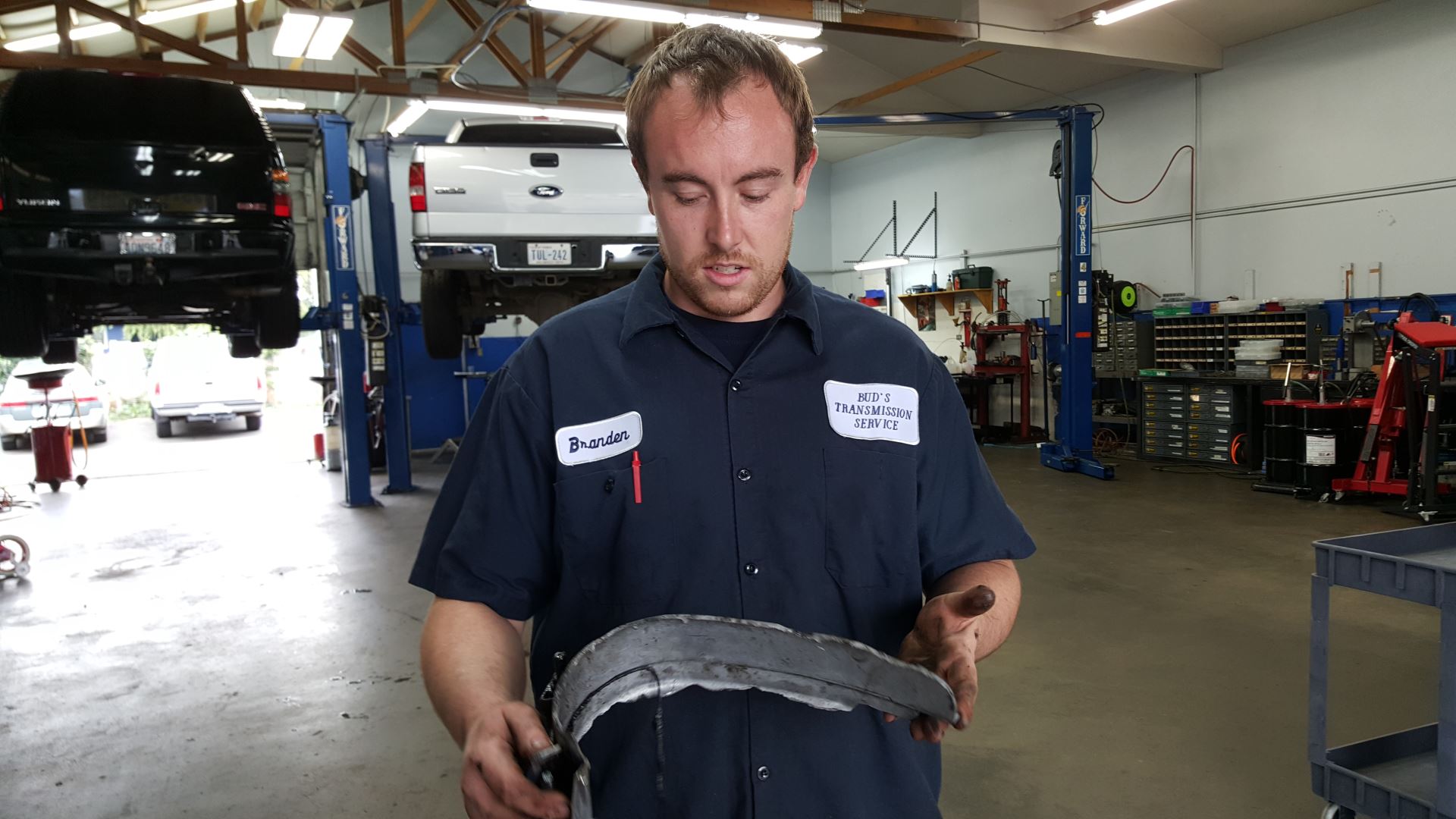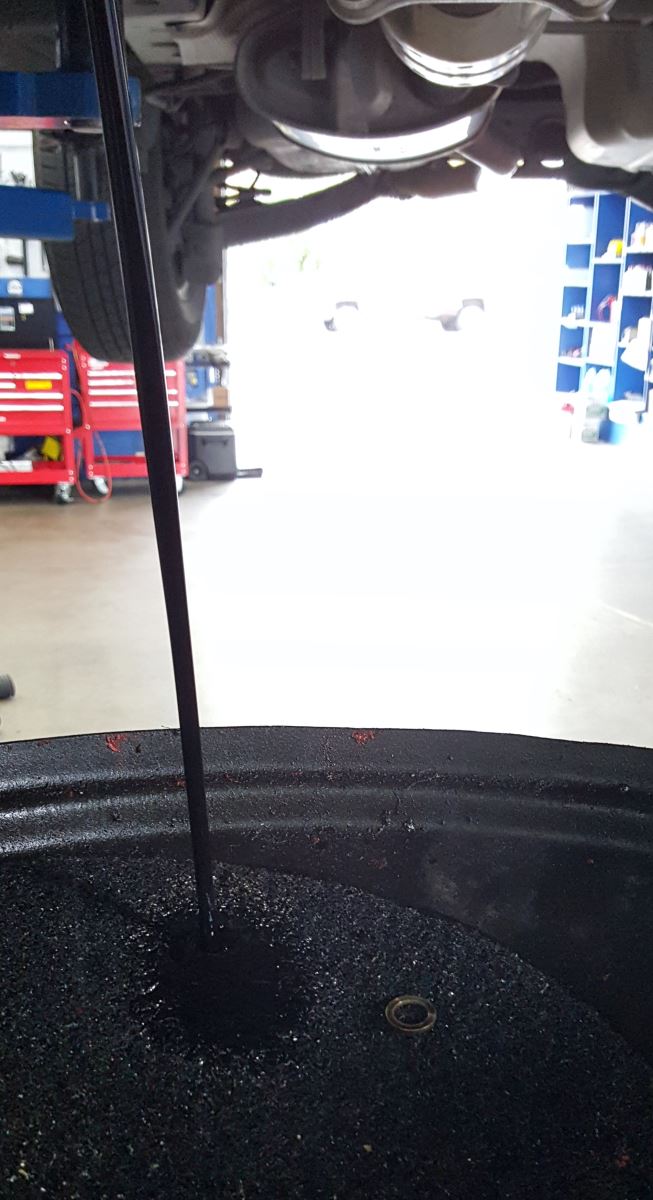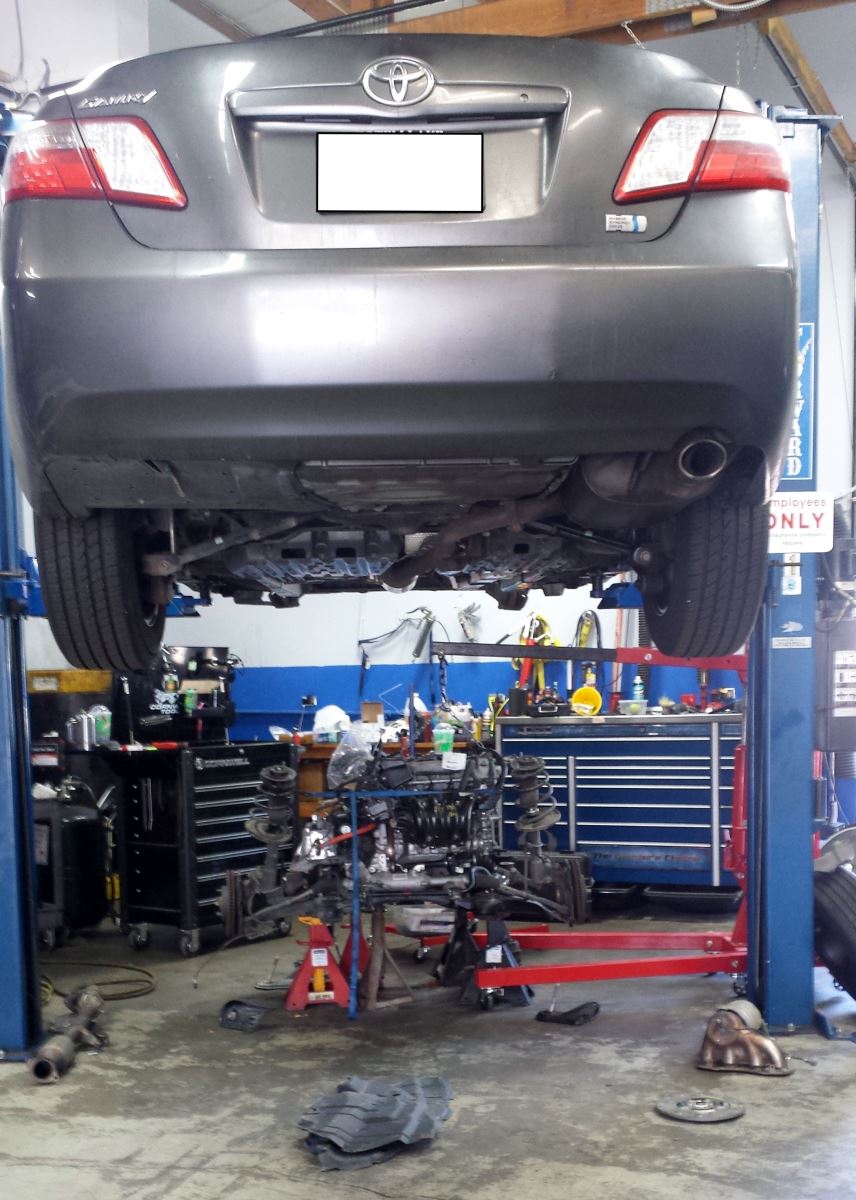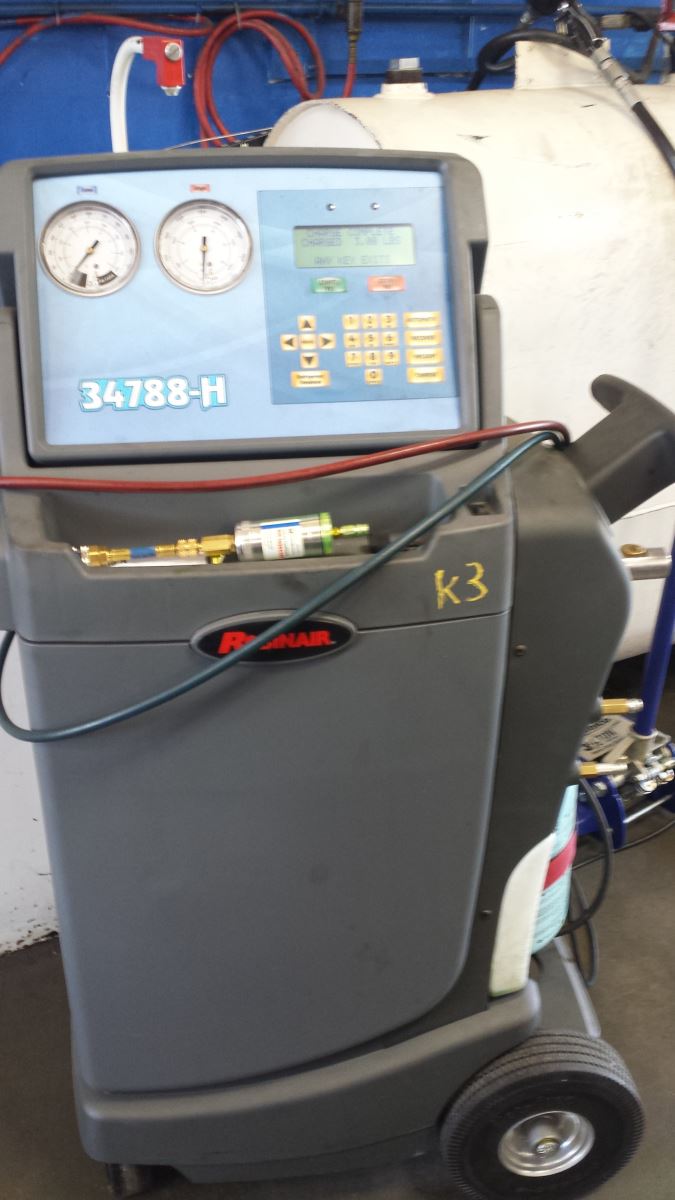Posted on 10/1/2015

Dodge 2500 September 2015 Transfer case… How many pieces do you need? This week we had a Dodge Ram 2500 that came in with no gears at all, for diagnostic and repair. The truck had used 4 wheel drive to get unstuck from out on some muddy roads and when the customer disengaged the lever, the 4 wheel drive indicator light stayed on. We believe this customer didn’t understand the full scope and meaning of what the warning light meant. He ignored the light and drove the truck going highway speeds for over 2 weeks, causing the truck to lose all gears. As the tow truck brought the truck in and the tech put it on the lift he could plainly see the transfer case no longer existed. It was in pieces! Branden called in the troops to take pictures and use the truck as an example of “What not to do” and “why indicator lights are important”. We were able to get the below pictures and want to share with our blog readers here in “Marysville, WA” and bey ... read more
Posted on 9/11/2015

Oil Pan Drain Plug Washer: To Change or Not to Change, that is the question? When changing the oil in a car or truck, most always, you will pull the drain plug or bolt (unless you have installed a Fumoto Valve*). This allows the dirty oil to exit the oil pan into the recycling canister. As the oil is exchanged, we install a new filter and replace the oil drain plug. With that, there is a washer that goes between the bolt and the oil pan. The oil bolt gasket or washer is necessary because it creates a barrier that withstands the pressure and vibration that would alternately go onto the plug itself. The washer comes in many different materials: copper, rubber, metal, aluminum, nylon or a combination of these. There are even “crush gaskets” that are meant to mold to the bolt/pan connection. These are used to make it easier for mechanics to be able to hand tighten the bolt. The crush gasket becomes fitted to the bolt/pan connection so tight and conformed that there are less lik ... read more
Posted on 8/7/2015
Car of the week blog: Week 9: 08/06/15 Bud’s is here to report in for week 8 of Car of the Week, 2002 Dodge Durango! We are mixing it up this week with a video of our “Car of the Week”. This Durango came in for diagnosis because it was making a noise that the customer knew was not normal. Upon inspection Branden found that the bearings in the front differential were horribly worn, putting metal contaminants into the diff fluid. When fluids aren’t checked and changed on a regular schedule, they aren’t able to lubricate their machine properly. When the lubrication isn’t working properly small pieces of the parts begin to break off and move in the fluid. As the fluid becomes contaminated with particles, it becomes corrosive rather than a lubricant. Within a small amount of time the fluid goes from being the piece that keeps the differential alive, to the piece that destroys it from the inside out. Click this link to see the video n ... read more
Posted on 7/3/2015

Car of the week blog: Week 7: 07/03/15 Bud’s is here to report in for week 7 of Car of the Week, 2009 Toyota Camry Hybrid! This weeks “car of the Week” is a Toyota Hybrid. Our technicians have been learning quite a bit lately as they work on vehicles that they don’t have years and years of experience with. Both of our techs have many years of Subaru experience so they rarely get tripped up on them, but some of the newer vehicles and types can give them a run for their money. This Camry Hybrid was pretty cut and dry though. The customer did their own oil change. A lot of people who change their own oil rarely have an issue but this time proved to be one of those rare times! After the car started running rough and making noise, the customer stopped to check their oil and realized that the oil plug had fallen out! They replaced the plug and filled the oil immediately, just to drive a very short distance and have the car stop completely. The ind ... read more
Posted on 7/1/2015

Automotive Air Conditioning Packard invented the auto air conditioner in 1939. It was quickly accepted and started becoming factory installed in cars the very next year, 1940. What the unit does is cools the air that passes through it and removes the humidity. It does this by using a compressor, condenser and evaporator. It’s commonly used to cool the air when it’s hot outside and when defrosting the windshield in the winter. Automotive air conditioning or, A/C as it’s commonly called, is a component that most Pacific North westerners only worry about when the two weeks of warm summer hit since our average temperature is like 75*. This year though, the PNW is having a heat wave! The sun is out and everything is HOT! We are breaking records and having to be extremely cautious of our surroundings, including our homes, pets and automobiles. With this week’s temperatures maxing out at 94* here in Marysville we are seeing more and more vehicles in to have their AC ... read more